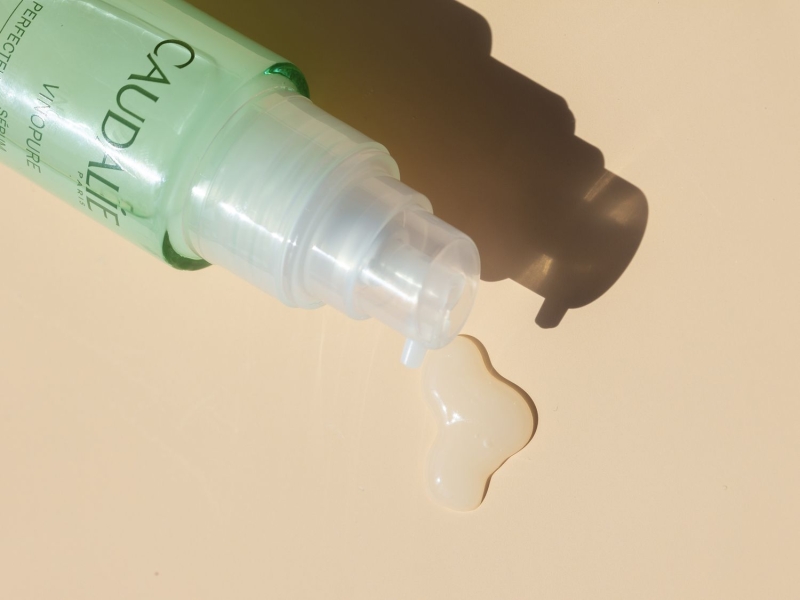
Using Them Together The Final Takeaway
For many if not most skincare enthusiasts, chemical exfoliation is a crucial step in their routine. But it isn't as simple as picking up a new toner and calling it a day. You need to know which exfoliants to use—and when and how to use them together. Each has unique benefits to help you achieve your skincare goals.
Two such exfoliants are lactic acid and salicylic acid. We went to board-certified dermatologists Dendy Engelman, MD, and Kristina Collins, MD, to learn more about how these ingredients can work alone—and together—to unveil glowing, even skin. Read on for what they told us.
What Is Lactic Acid?
Lactic acid is an alpha-hydroxy acid (AHA) that works as a gentle chemical exfoliant. “Derived from milk, it helps to remove dead skin cells, promoting a smoother and brighter complexion,” explains Engelman. “This makes it an essential addition to any skincare routine, even for sensitive skin.” Lactic acid helps shed and remove dead skin cells and increases cell turnover, reducing fine lines and brightening the skin, adds Collins.
"When using this, or any other AHAs, you will want to make sure to wear UV protection because chemical exfoliants can cause increased sun sensitivity," says Collins. "You will also need to use caution when using retinol or other vitamin A derivatives with AHAs, as this could lead to increased skin sensitivity."
What Is Salicylic Acid?
Salicylic acid is a beta-hydroxy acid (BHA) popular for addressing acne and oily skin. Like lactic acid, it’s a chemical exfoliant. “BHAs, like AHAs, increase the cell turnover rate, but they are oil soluble and therefore can penetrate the skin more deeply than AHAs,” Collins says, helping them “dive in” to clear and shrink the pores.
Choosing Between Them
Acne
“Salicylic acid is recommended for addressing acne and breakouts, especially for individuals with oily skin,” Engelman says. “Salicylic acid is best used for treating acne, managing excess oil, and clearing clogged pores, and is particularly beneficial for treating blackheads and whiteheads.”
Anti-Aging
“If you seek a gentle exfoliation that emphasizes hydration, improved texture, and anti-aging benefits, lactic acid is the ideal choice for your skincare routine,” Engelman explains. “Plus its mild formulation makes it suitable for all skin types.”
Can They Be Used Together?
You can definitely use lactic acid and salicylic acid together in your skincare routine, especially if you’re looking to amplify the results of these ingredients. That said, you’ll want to be careful with how you go about combining them. “It is important to know that combining acids in a product can increase the potential for irritation, so you may want to incorporate this into your regimen slowly, with breaks between use,” Collins says.
She explains that most people use these acids at night because they can temporarily make your skin a bit red. “An exception would be when a person is treating acne or sebum overproduction, in which case they may use salicylic acid or other acid cleansers or products twice daily,” she adds.
For the best results, both of these skincare ingredients should be gradually introduced into your skincare routine, applied after cleansing and before moisturizing, Engelman says. If you have sensitive skin, she recommends trying gentle products or alternating salicylic acid and glycolic acid from one day to the next.
Whether you use these products solo or together, your regimen must include sunscreen; Both can make your skin more sensitive to UV rays. "Additionally, I recommend incorporating hydrating and soothing moisturizers into your routine to maintain skin barrier health and balance any potential drying effects from the acids," Engelman says.
The Final Takeaway
Both lactic acid and salicylic acid can boost your skin thanks to their exfoliating benefits. Generally, lactic acid is your best option if you're looking to address fine lines, uneven skin texture, and other mild signs of aging skin, or for a nice boost of hydration. Meanwhile, if you have concerns about acne—like oily skin, breakouts, and clogged pores—salicylic acid is a good choice.
You can use both products in your skincare routine. Sometimes they're even combined into one product. If you decide to use them together, do so slowly and look out for redness and other signs that your skin is experiencing irritation. If you do, stop using the product(s) and make an appointment with your dermatologist.
